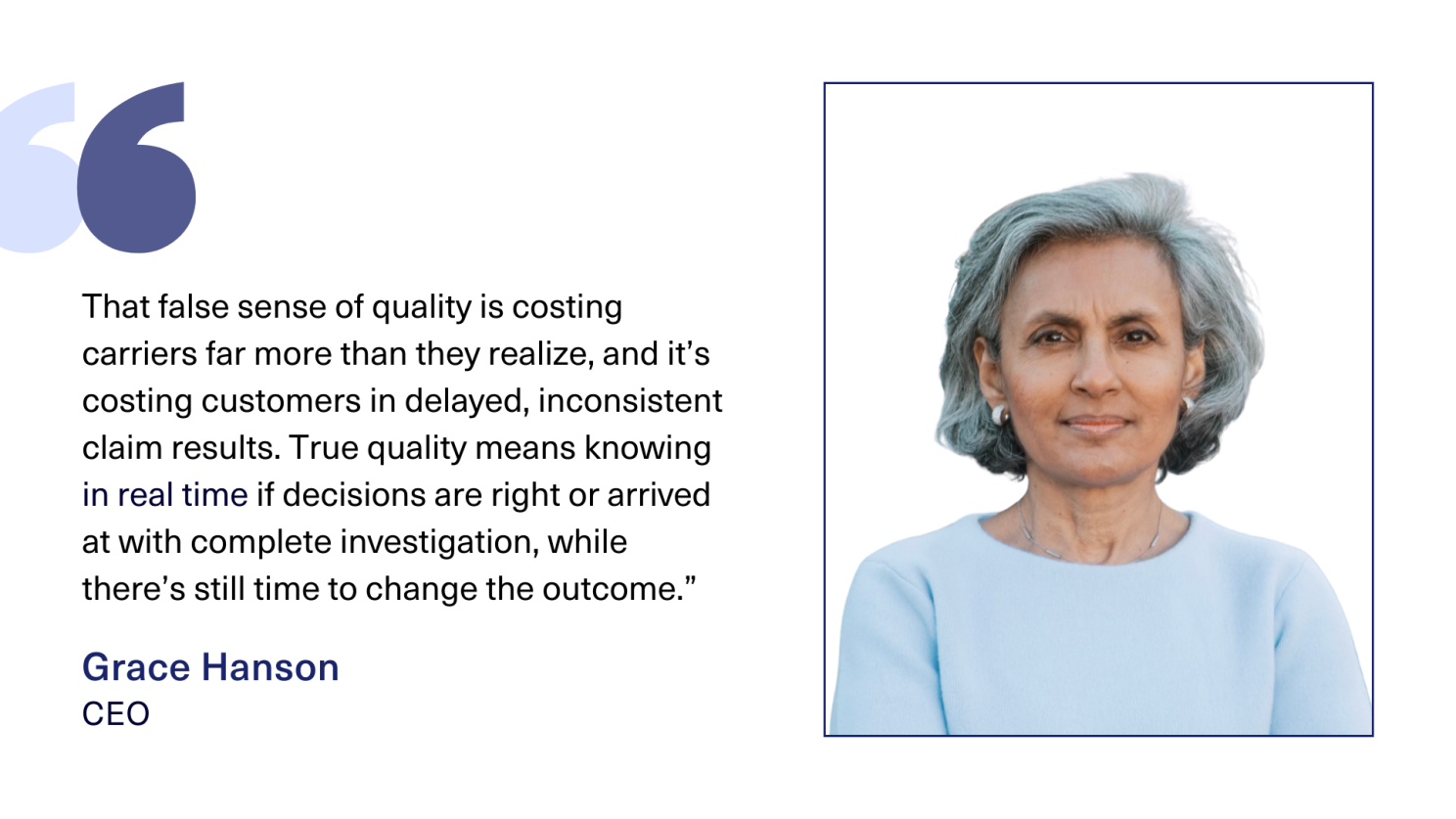8 min read
The Impact of Unfair Claims Settlement Practices Laws on Claim Declination Letters
The Impact of Unfair Claims Settlement Practices Laws on Claim Declination Letters by Bill Wilson This article originally appeared on Bill...
2 min read
 Macy Browning
:
Aug 18, 2025 2:13:52 PM
Macy Browning
:
Aug 18, 2025 2:13:52 PM

 This guest article from Elysian first appeared HERE
This guest article from Elysian first appeared HERE
Welcome to Part 1 of Delivering Claims Results. This series examines how traditional QA misses what matters when it matters—leading to blind spots, late feedback, and fragmented oversight. We explore what changes when quality is measured continuously, with mid-claim interventions and portfolio-wide, finance-grade metrics. Consider this an executive brief for moving from "looks fine" assessments to verifiable execution quality at scale, covering the exposures, economics, and operating framework needed to deliver exceptional claims outcomes.
A Costly Miss
In claims, quality assurance (QA) is largely retrospective. It serves as a final scorecard confirming the outcome but arriving too late to change it. By the time a quality review is completed, expenses are locked in: overpayments have been made, defenses weakened, customers are dissatisfied, and vendors were left unchecked.
Consider an adjuster who works a commercial liability claim for 18 months and reaches settlement. A review shows that a clear coverage defense was missed extending the case and adding $500,000 in avoidable indemnity and fees. The insured lived with prolonged uncertainty; the carrier absorbed the overrun. That same adjuster still carries more than 150 open files, so similar misses may continue with multiple stakeholders suffering the consequences.
Completeness ≠ Correctness
The reality is that files can check every box in QA and still be problematic. They could contain:
As CEO Grace Hanson explains:
“Most QA gives leaders a checklist of activities. Often it doesn’t show if those activities were correct, complete, or even relevant to the outcome. That false sense of quality is costing carriers far more than they realize, and it’s costing customers in delayed, inconsistent claim results. True quality means knowing in real time if decisions are right or arrived at with complete investigation, while there’s still time to change the outcome.”
Too little, too late
Why has QA been ineffective at fully addressing claim issues across portfolios? Traditional QA relies on small samples (typically just 1–5% of files) and the results often land months after the work. Industry data puts claims inaccuracies at 7% to 14% of total claims spend (EY, 2025). That is billions in preventable loss from claims handling defects each year. Retrospective sampling through QA can make a difference in identifying patterns, but it is helpless to solve those problems in real time.
Long-tail commercial lines are particularly exposed. Problems can stay hidden for years before emerging during litigation when costs peak and customers have dealt with unresolved claims far longer than necessary. Coverage decisions that seemed adequate at intake can prove insufficient when examined years later, and documentation gaps can fuel bad-faith allegations or inflated settlement and/or jury verdicts. Plaintiff attorneys look for those gaps and convert each one into leverage. The most aggressive attorneys understand the challenges faced by insurance company claim opaqueness and capitalize on them
Breaking the Pattern
To stop the persistent operational gap between identifying failures in real time, treat quality review as an active control, not a periodic audit. Quality review that operates while files remain open addresses these vulnerabilities before they affect outcomes, ensuring policyholders receive timely, consistent resolution while protecting carriers from avoidable exposure.

Takeaway
If you can’t see an execution error, you can’t stop it. Limited sampling and slow reviews hide costly mistakes until they become runaway costs, litigation landmines, and strategic blind spots. Continuous checks on active files surface those problems early—before reserves bleed, defenses weaken, and customers endure drawn-out, error-prone claims.
This is the first installment in our latest series Delivering Claims Results. In Part 2, we’ll examine how real-time claim visibility creates intervention windows that traditional post-close audits cannot access, turning potential losses into recoverable wins for both carriers and policyholders alike. Subscribe to The Elysian Era so you don't miss our next installment.

8 min read
The Impact of Unfair Claims Settlement Practices Laws on Claim Declination Letters by Bill Wilson This article originally appeared on Bill...

3 min read
Executive Summary In the insurance industry, the concepts underpinning thermodynamics offer a compelling framework to understand and manage the...

2 min read
The Vowels of an Ultimate Claims Experience – I = individuality by John Bachmann We’ve talked about Anticipation.We’ve talked about ...